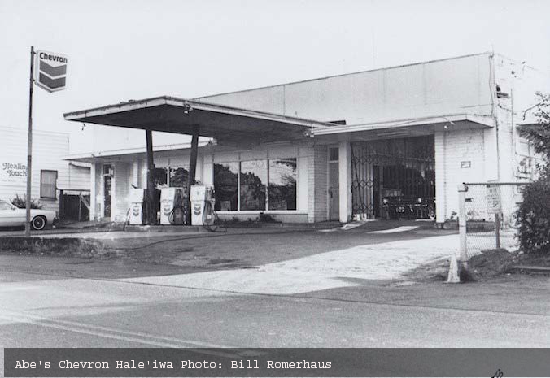By Antya Miller
In the early 1900’s a multi-ethnic labor force was recruited from many countries to work on the Waialua sugar plantation, with the largest groups
from Japan and the Philippines. Labor strikes in the early 1920’s resulted in many workers leaving the plantation and starting businesses in Hale‘iwa. As a result, almost all the historic buildings still standing in Hale‘iwa were built by Japanese immigrants who came to work at the plantation, as demonstrated by the histories in this issue.
Most of the buildings were made of wood. One exception was the Hale‘iwa Theater built from lava rock and cement which opened in 1931. It seated 900 and featured a stage, a trap door to the dressing rooms below, and an orchestra pit in front of the stage. Quite a treasure for a little town like ours, but it fell to the wrecking ball in 1983. Its destruction galvanized the community to preserve the other historic buildings and maintain the town’s plantation character. A year later, the Hale‘iwa Special Design District (HSDD) was established and now protects over 40 historic structures.
The HSDD requires that any changes to one of the protected buildings or those over 50 years old must first obtain a building permit which is then reviewed by the State Historic Preservation Division. Most important is that the exterior walls, windows, and doors be kept intact. In recent years several buildings have been demolished or destroyed without permit. One, the former Abe’s Gas Station, was a rare example architects classify as a “Stylized Box Gas Station.” It was also eligible for the State Register of Historic Places. Unfortunately, the front was destroyed without a permit and is no longer eligible for the Register.
Why is vigilant protection of our older buildings important? They help give our town its unique character and are a lasting, physical connection to our past and the people who built it.



